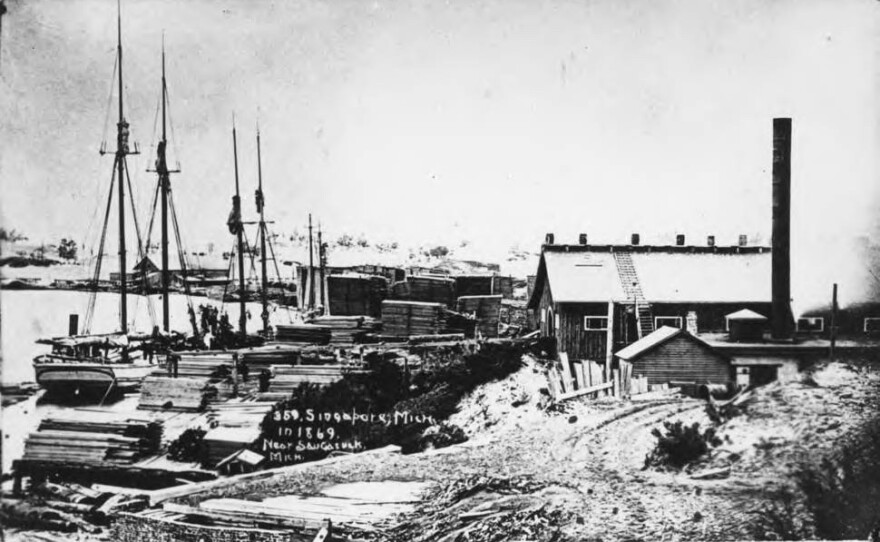When you hear the words "ghost town," you might imagine a dusty, vacant place in the Old West, where cowboys once tread.
Well, think again because Michigan has its share of ghost towns, too.
Mark Harvey from the Michigan History Center joined Stateside to talk about one of them: Singapore, Michigan.
In 1836, just before Michigan was founded, Singapore was established in Southwest Michigan. It was north of present-day Saugatuck, just off the shore of Lake Michigan. The hope was that the town would mirror the success that the original Singapore had enjoyed, shifting from a sleepy fishing town to a significant port city in a short time.
But that didn't happen.
About 50 years later, the town, which was located next to a massive sand dune, was completely gone. It's disappearing act earned it the nickname "Michigan's Pompeii.*" But as dramatic as being swallowed by sand may be, it wasn't the only reason for Singapore's demise.
(*NOTE: Pompeii was an Italian city completely wiped out after it was buried following the eruption of a nearby volcano in 79 A.D.)
Listen to the full interview above to hear what happened to Singapore, what's left of it now, and how "wildcat banking" contributed to the town's downfall.
This segment is produced in partnership with the Michigan History Center.
(Subscribe to the Stateside podcast on iTunes, Google Play, or with this RSS link)










